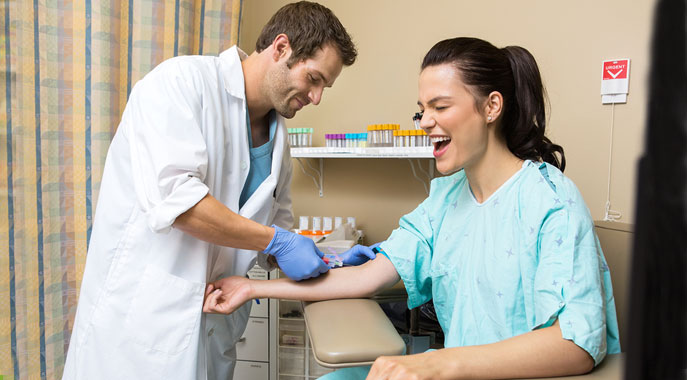**Title: Phlebotomy Training Requirements: What You Need to Know**
**Introduction:**
Phlebotomy is a critical part of the healthcare industry, involving the collection of blood samples for testing, transfusions, research, and other purposes. Becoming a phlebotomist requires specific training to ensure accuracy, patient safety, and compliance with regulations. In this article, we will discuss the essential phlebotomy training requirements that aspiring phlebotomists need to meet to kickstart their career in this field.
**Phlebotomy Training Requirements:**
***1. Education:***
To become a phlebotomist, you typically need a high school diploma or equivalent. Some employers may also prefer candidates with post-secondary education, such as a certificate or associate’s degree in phlebotomy. These programs provide in-depth training on phlebotomy techniques, medical terminology, anatomy, physiology, and infection control practices.
***2. Certification:***
While certification is not always mandatory, it is highly recommended for phlebotomists to enhance their credibility and job prospects. The most common certification for phlebotomists is the Certified Phlebotomy Technician (CPT) credential offered by organizations like the National Healthcareer Association (NHA) or the American Society for Clinical Pathology (ASCP). To obtain certification, candidates must pass a standardized exam after completing an accredited phlebotomy training program.
***3. Clinical Training:***
Hands-on experience is a crucial component of phlebotomy training. Students typically undergo clinical rotations in hospitals, clinics, or laboratories to practice venipuncture techniques under the supervision of experienced phlebotomists. This practical training helps students develop the necessary skills and confidence to perform blood draws accurately and safely.
***4. Phlebotomy Skills:***
In addition to formal education and certification, phlebotomists must possess certain essential skills to excel in their role. These include:
– Proficiency in venipuncture and capillary puncture techniques
– Ability to follow proper protocols for patient identification, specimen labeling, and infection control
– Excellent communication and interpersonal skills to interact with patients and healthcare professionals
– Attention to detail and accuracy to prevent errors in sample collection and handling
**Benefits of Completing Phlebotomy Training:**
– Increased job opportunities in hospitals, clinics, blood banks, and diagnostic laboratories
– Competitive salary and potential for career advancement in the healthcare industry
– Fulfilling role in patient care and contribution to medical research and treatment
– Job stability and demand for qualified phlebotomists in the healthcare sector
**Practical Tips for Phlebotomy Training Success:**
– Stay updated on industry trends, regulations, and best practices through continuing education and professional development
– Practice venipuncture techniques regularly to improve your skills and confidence
– Seek mentorship from experienced phlebotomists to gain insights and guidance in your career
– Network with professionals in the healthcare field to expand your opportunities and knowledge base
**Conclusion:**
Completing phlebotomy training is a vital step towards a rewarding career in healthcare. By meeting the education, certification, and practical training requirements, aspiring phlebotomists can acquire the necessary skills and knowledge to excel in their role. With the demand for phlebotomists on the rise, investing in quality training can open doors to a fulfilling and stable career in this critical healthcare profession.
Remember, the key to success in phlebotomy lies in dedication, skill development, and ongoing learning to stay ahead in this dynamic field. By meeting the training requirements and honing your abilities, you can embark on a fulfilling journey as a proficient and trusted phlebotomist.
